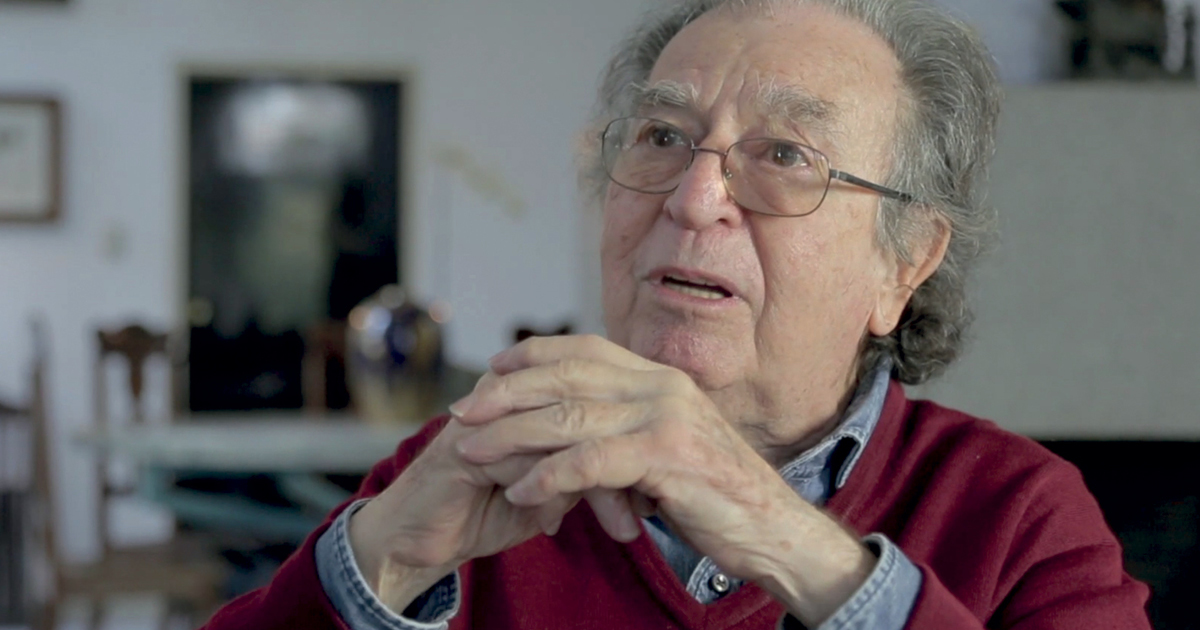Alexandre Wollner said that he spent part of his childhood in the company of his mother, a seamstress, and his father, who owned a type shop. “I can just picture him as a boy, fascinated to observe his parents transforming materials into objects of design,” says Maria Cecilia Loschiavo dos Santos, a professor of design at the School of Architecture and Urban Planning at the University of São Paulo (FAU-USP). His Yugoslav parents immigrated to São Paulo, where they had a son who was destined to become one of Brazil’s greatest names in graphic design. Wollner was also instrumental in promoting academic training in design in Brazil, and introduced the modern concept of visual identity through designs that were distinctive for their geometric, logical, and functional characteristics. He died on May 4 from a stroke, leaving a wife and a son.
Wollner studied in the first class of the newly created art initiation program at the Institute of Contemporary Art at the São Paulo Museum of Art (MASP), between 1951 and 1953. His professors were art critic, curator, and dealer Pietro Maria Bardi (1900–1999)—one of the founders of the museum—and architects Lina Bo Bardi (1914–1992) and Jacob Ruchti (1917–1974). “He was a young man from a modest family, and his first work in graphic design consisted of producing posters for exhibitions at the museum,” says dos Santos. In 1951, he helped to set up an exhibition for Max Bill (1908–1994), a Swiss artist and designer who had studied at the avant-garde Bauhaus, a German school of design, architecture, and fine arts, and an important source of reference for architects and concrete artists in Brazil. “Bill was then one of the world’s greatest names in graphic and product design, and Wollner felt that impact when he was exposed to his work.”
Two years later, Wollner’s talent was recognized by way of a Young Painter of the Year award at the 2nd edition of the São Paulo International Biennial, for his work at MASP. Also in 1953, he was recommended by Bardi to the first class of students at The Ulm School of Design (HfG), a school created by Bill.
“Wollner’s training at Ulm drew him away from fine arts and freehand craftsmanship and into the use of more technical workmanship,” says João de Souza Leite, a professor at the School of Industrial Design at Rio de Janeiro State University (ESDI-UERJ). Dos Santos, from USP, says that his experience in Germany reinforced Wollner’s inborn preference for formal rigor and geometrization, and a style that meshed with the ideas of concrete art. “Wollner built a bridge between Brazil and the world’s big design names,” says the professor.
Architect Francisco Inácio Scaramelli Homem de Melo, also a professor at FAU-USP, explains that before Ulm, design in Brazil was done empirically. “There was no theoretical foundation. Those working in design were simply people with a talent for drawing and illustration,” says Melo. Modern design replaced this haphazard approach with the notion that the craft should have a solid foundation in theoretical knowledge and drafting skills. “This led modernist designers like Wollner to advocate for the creation of design schools,” he explains.
A symbol of modernity
After returning to Brazil in 1963, Wollner founded Esdi—the first university-level school of design in Brazil—with Karl Heinz Bergmiller, one of his classmates at Ulm. The school was a brainchild of then-governor Carlos Lacerda (1914–1977) and Secretary of Education Carlos Flexa Ribeiro (1914–1991), a former executive director of the Rio de Janeiro Museum of Modern Art (MAM-RJ), and was funded by the state government. “Esdi was a symbol of modernity and ushered in the professionalization of design in Brazil,” says Souza Leite. In 1975 the school was merged into UERJ. Wollner taught at Esdi until the mid-1980s. Souza Leite studied under him in 1965 and recalls how throughout his life he remained staunch in his view that design ought to be separated from freehand art and craftsmanship. Another of his views, influenced by his training at Ulm, was that design should be used for mass and large-scale production, not just for boutiques.
After studying in Germany, Wollner also became renowned for the many visual identity designs he developed. In 1958, alongside photographer Geraldo de Barros (1923–1998), designer Ruben Martins (1929–1968), adman Walter Macedo, and Bergmiller, he founded Forminform, one of the first modern design offices in Brazil. Souza Leite recounts how the group sought to implement what they had learned from their training at Ulm, using a technical and scientific approach to design and incorporating these concepts in the creation of the visual identities of brands, advertising art, and graphic designs for newspapers. The locally famous Coqueiro sardine tin designs and the visual identity of Elevadores Atlas were among their creations during this period.
Souza Leite explains that, reflecting his training at Ulm, Wollner’s designs were developed using compasses, rulers, triangles, squares, and circles. “Almost all of his work was based around elements of common geometry.” Wollner witnessed the design profession’s “liberation” from these instruments with the advent of personal computers. “Still, he retained the same concepts of precise geometry in his designs. They were a hallmark of his oeuvre,” he says.
In his final years, Wollner went back to constructivist painting, producing creations that he printed from a computer, and served on the Program Committee at Museu da Casa Brasileira (Brazilian House Museum). Giancarlo Latorraca, the technical director at the museum, recalls how in 2013 the Frankfurt Museum of Applied Arts organized a retrospective to celebrate the 60th anniversary of his career: “The exhibition presented Wollner as one of the most important graphic designers of the second half of the twentieth century.”
Republish